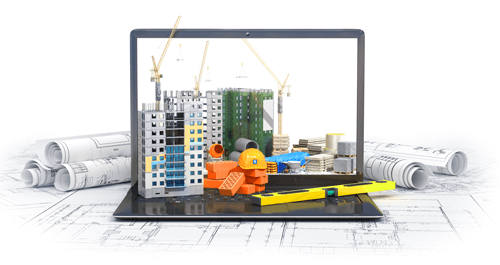CASE STUDY
Industry: Construction Management
Product: Triton IP67 Camera
SDK: Arena Software Development Kit
Real-time IoT video monitoring of construction sites using Triton IP67 cameras
When IoT data is utilized for real-time construction site monitoring, the image processing can be done in two ways: either on-premises or in the cloud. Aside from the cost of the initial investment and operation of such cloud-based solutions, high-speed data processing and data security are essential considerations for real-time monitoring and analysis. In recent years, with the advancement of AI technology, video monitoring and analysis has greatly advanced. However, the amount of video data collected is often significant, and in order to simultaneously process video analysis that is constantly uploaded from many cameras to the cloud, it is necessary to consider the overall system load on the cloud.

Challenge
By centrally managing data from vehicles, equipment, and field workers at construction sites, it is possible to remotely grasp the overall situation in real-time in order to understand operation status and improve maintenance efficiency. MODE Inc, a Silicon Valley-based IoT company, provides a scalable data infrastructure that collects data from the physical world to help businesses improve their operations. With its sensor gateway solution, MODE can connect a company’s sensors and equipment, plus funnel that data into the cloud all within a few days.
In the previous generation, the recorded video was a short clip, but now it can be recorded for up to 4 hours in a format divided into 20 to 30 minutes segments.
In this application, two LUCID Triton IP67 cameras, featuring the 3.2 MP Sony IMX265 CMOS sensor, were connected to one gateway. Simultaneous recording with high-definition recording made full use of the camera’s performance difficult due to the performance of the gateway, but it was able to compress the video to web size and transmit it to the cloud. MODE combines high-processing gateway hardware with MODE gateway software to enable AI analysis of recorded videos on the edge.

Solution
LUCID’s Triton TRI032S-CC cameras were configured in such a way that the images were sent to the PC as raw RGB data and thus generated a video with the Arena SDK on the PC side. The camera itself was placed a few hundred meters away and was sending data from there.
The simultaneous connection between the two cameras was performed in the MODE Mobility Cloud which collects data from the vehicle where the outside and inside of the construction vehicles were recorded. This time MODE extended the recording function of the MODE Sensor Cloud, but was using the same infrastructure as the MODE Mobility Cloud.

LUCID’s Triton cameras are waterproof and dustproof with IP67 rating and can be installed in harsh environments such as construction sites.
The highest quality recording can take up all the bandwidth of the network, so MODE decided to generate the videos by using a video generation pipeline which they’ve developed. LUCID’s video drivers mainly use C++ APIs.

Conclusion
In addition to collecting vehicle data such as their position and acceleration, sensors collect the operation status of construction equipment to improve their efficiency and maintenance. By collecting environmental information at construction sites from sensors in real-time, it is possible to properly deal with problems before they occur.
It is quite important that the data can be collected and managed centrally from the head office. For example, imagine the operation of 100 construction sites distributed nationwide, and you want to monitor all the construction work being carried out there in real-time. If you automate it with IoT and upload it to the cloud using MODE, you will be able to automatically collect 100 videos nationwide every day, analyze the information and provide seamless cooperation across the various construction sites.
Learn More:
Visit MODE Inc
For more information on the Triton camera, visit the Triton Product Page.
 Support Center
Support Center
